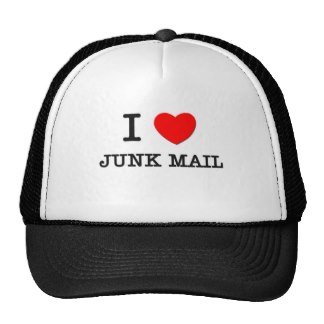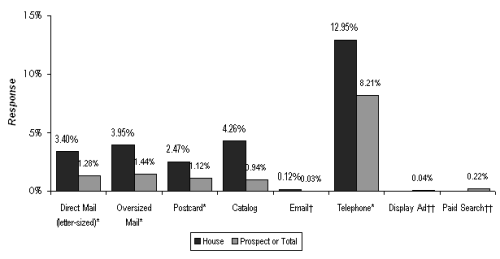Creating eMails Campaigns for Direct Mail Junkies How (…)

Creating Email Campaigns for Direct Mail Junkies
Creating eMails Campaigns for Direct Mail Junkies
How to apply Direct Mail Principals when creating your eMail Campaigns
I admit, I am a direct mail junkie.
Without a doubt I spend more time looking over my mail than your average consumer. I was literally born into an environment where I was immersed in direct mail. My family entered the data compilation industry almost a half century ago. Originally my family started out in the yellow page publishing business. Advertisers would routinely ask for a list of the names and addresses of residents by city or businesses by yellow page industry headings. The advertisers were using the names to send direct mail advertisements. Clients began to ask if we could provide the type setting (before they were called “graphic designers” they were called typesetters) services as well. That lead to hiring more typesetters and pretty soon we needed to hire a copywriter that specialized in direct mail. Within a few years that division of the company grew and in 1977, Accurate List Company was formed. Initially this new start up would provide just residential and business lists, but soon they were offering many other specialized list titles. Within just a few years there was another spin-off company, Direct Advertising Associates. This new company was a complete turnkey Direct Marketing Agency complete with in-house direct mail copywriters, graphic artists, and a full service mailing house, not to mention data processing services and response analysis tracking. Soon I would spend my summers assembling mailings, downloading magnetic reel-to-reel computer tapes, and sorting mail pieces by industry and offer type. I spent more time in mailing houses and print shops, than most young teenagers spend at the beach or the mall. The point here is that I’ve literally been surrounded by direct mail since I was old enough to crawl. I literally eat, sleep and drink this stuff on a daily basis.
Through the years, I learned everything I could about how to be successful with direct mail. And then along came e-mail marketing. E-Mail marketing was hailed as the new marketing channel of the future. Email was the supposed successor and conqueror of direct mail. Direct Mail was doomed. It’s 2013 and Direct Mail still beats e-mail on response. (See the chart below showing the Results of the Direct Marketing Associations 2012 Response Report Analysis) E-mail did not eliminate direct mail as a channel, nor do I think it ever will. But I have come to realize that e-mail has it merits especially with it comes to customer relationship management. E-Mail can also be a great complement to direct mail. In fact studies have shown time and time again that this type of integrated marketing can increase ROI dramatically. So as the marketing landscape changes, so must we all. Adapt or die they say.
This guide will show you how to use direct mail principals to create successful e-mail campaigns, hopefully used in combination with plain old direct mail. If you want to learn the design specifics of creating an e-mail marketing message (no HTML needed), see our article on How to use Direct Mail Creative for your E-mail Campaign.
What are you trying to accomplish?
Before you design anything, this is the first question a direct mailer always asks. Are you trying to get orders, vs. prospects? Are you driving people to a retail outlet or building brand awareness? These same questions should be posed with an e-mail campaign but understand that e-mail can be used to either deliver a strong standalone message or merely act as a compliment to your direct mail, depending on your offer. Easy to understand offers, such as getting a free appetizer at a great
new restaurant, should be mimicked in the e-mail, but more complex selling propositions should be left for the direct mail portion of the job or as part of a well-designed website. In these cases, it is up to the e-mail to draw interest and then refer the user to either the coming direct mail piece, or to an existing website.
General “look and feel”
Direct mail is designed a certain way to showcase a company’s image, create certain feelings and above all, to deliver a message. Things are no different with e-mail,
except that you have less space to make your same case and small text is difficult to read on a computer screen. Figure out the most important part of your message and make this the crux of your e-mail. If it is to “come to an event”, “eat at our restaurant”, or a “special on tires”, this should be foremost in your message. Most importantly, your e-mail should look like your direct mailer in terms of colors and graphics. That way, they play off each other. Repetition is important in any marketing message, and by making the e-mail and direct mail similar in terms of “look and feel”, the recipient is likely to link them together in his mind.
The Subject Line
The most important part of any e-mail marketing message is the subject line It’s here that the customer decides to peruse the message or click delete. Think of the subject line as a teaser on an envelope. You are trying to do the same thing here. No lying. No fantastic claims. Though, you definitely want to draw interest without giving everything away. Tell them the best part of your offer, without any of the drawbacks.
Examples:
Restaurant subject line:
Complimentary appetizer for you.
In the e-mail text:
They need to purchase an entrée to get the appetizer.
Tire company subject line:
Four new tires, as little as 99 bucks.
In the e-mail text:
Multiple tires and pricing. The $99 is for the low-end tires.
County Fair subject line:
County Fair, April 12th & 13th – Have fun!
In the e-mail text:
Hours and cost.
Now let’s make these subject lines better. Adding something a person recognizes will always lead to better results. This means brand name recognition, city of an event or of a location, even a local sports team or landmark.
Improved Examples:
Restaurant subject line:
Complimentary appetizer at our Burbank location
Tire company subject line:
Four new Goodyear tires, as little as 99 bucks.
County Fair subject line:
County Fair Coming to Kalamazoo –April 12th & 13th
Other Subject Line Rules:
1. Keep the subject lines to 55 characters or less.
2. Stay away from SPAM techniques.
a. No ALL CAPS.
b. Use alternate words(complimentary instead of free, cost instead of money).
c. Avoid the following words in your subject line whenever possible:
- >Profits $$$ Cash
- Earn Thousand(s) Help
- % Reminder Discount
- Giveaway Lowest Amazing
- Deal Save
And anything else that just sounds like SPAM.
The From Line
Just like the subject line is similar to an envelope teaser line, the “from line” is similar to what you would put in the return name and address area of an envelope. One difference between them is that while direct mail can go without return information, an e-mail must always bear the name of the sender’s company in order to follow CAN-SPAM practices. When using e-mail, the “from line” should always complement the subject line, as they go hand-inhand. Again, using brand name or city recognition is helpful, especially if this was not used in the subject line. Below are examples of how we put the “from line” with the subject line to give the recipient a complete example of what the message may be about.
From Line: Don Jose Mexican Cuisine
Subject: Complimentary appetizer at our Burbank location
From Line: Burbank Tire Outlet
Subject: Four new Goodyear tires, as little as 99 bucks
From Line: What to do in Kalamazoo
Subject: County Fair Coming to Kalamazoo – April 12th & 13th
Your Offer
The offer goes back to what you are trying to accomplish. If you are trying to mimic your direct mail piece, it should just have the same offer that yourdirect mail piece has. If your objective is trying to get people to read the mail piece, you should at least hint about the offer. “Look for our mail piece to learn how you can save thousands of dollars…”
In Conclusions
Like direct mail, e-mail marketing is not rocket science. The easiest thing to do when you’re creating an e-mail campaign is to ask yourself, assuming you were the target recipient, “Would I read this e-mail?” and “Would I respond to this e-mail?” And finally, “Does this e-mail campaign look similar to the direct mail campaign?” If you can answer yes to these questions, you’ve done a good job. And this will generally translate into higher ROIs and happier customers – which is what we all want!



